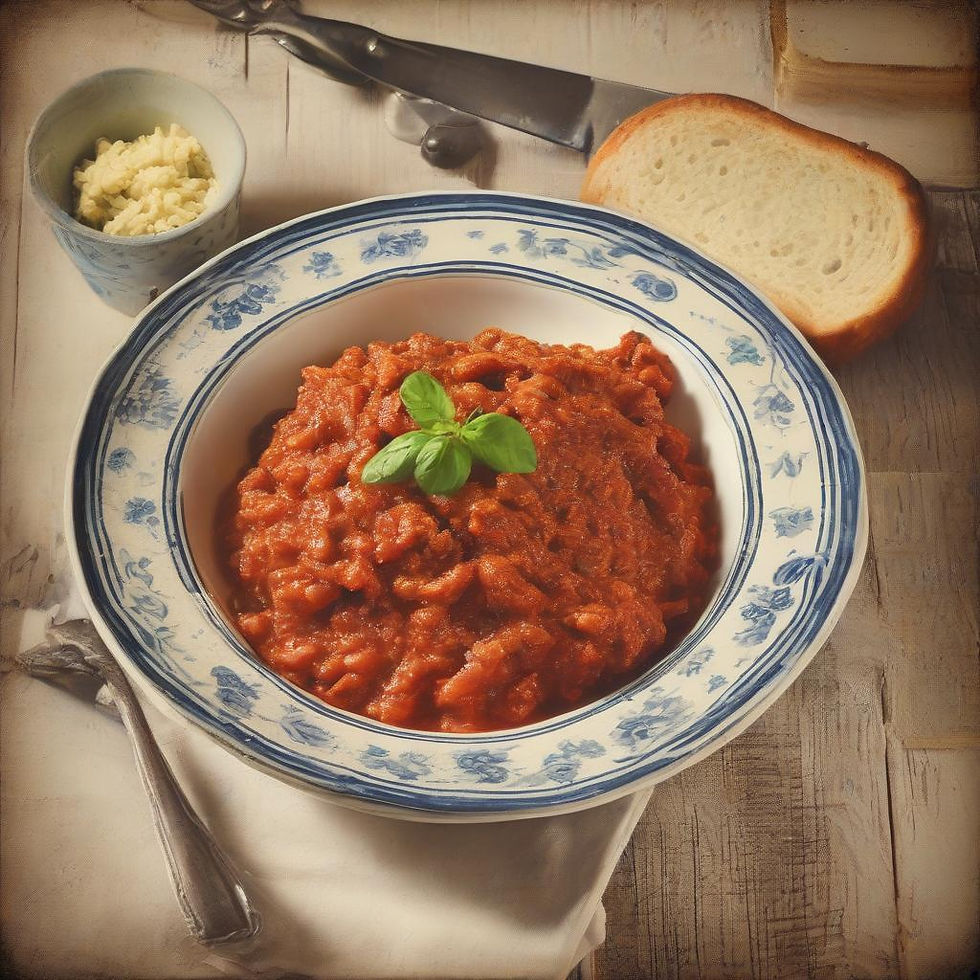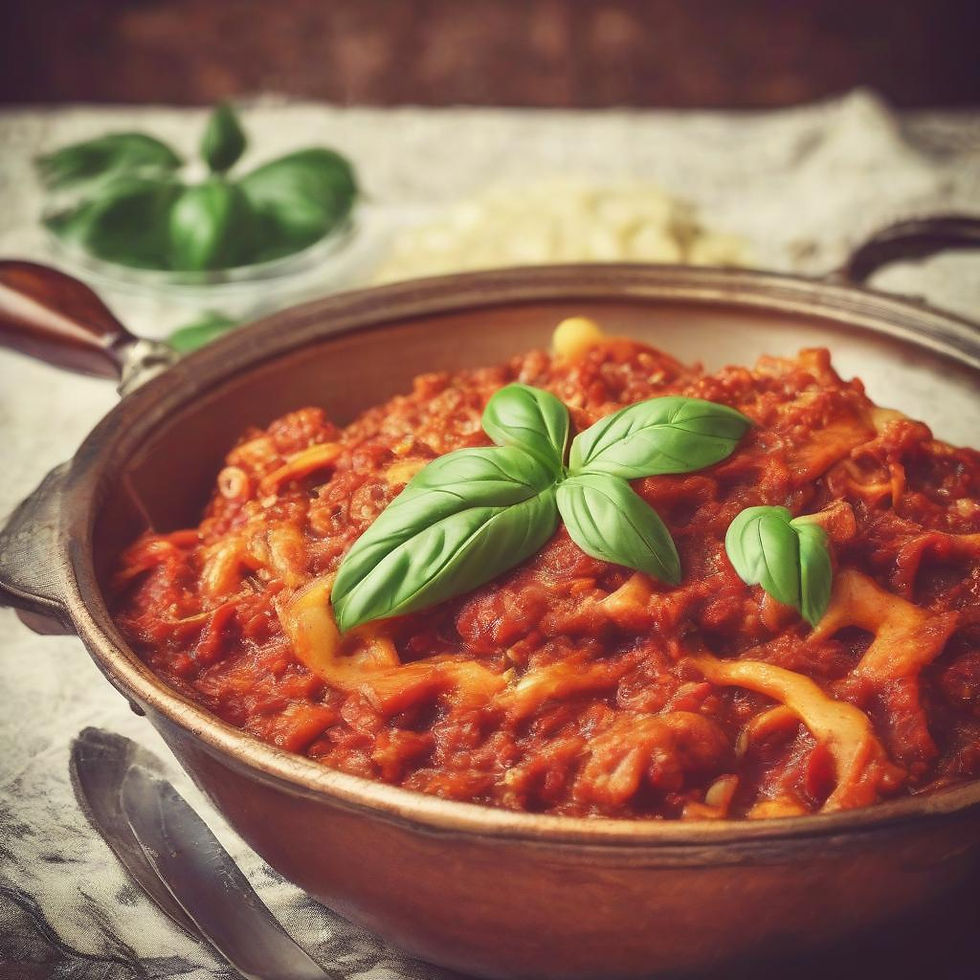The Richness of Ragu Napoletano: A Tale of Tradition and Taste
- Giu

- Feb 22, 2024
- 3 min read

Italian cuisine is renowned for its regional diversity, exquisite flavors, and its ability to turn simple ingredients into something truly magnificent. Amongst the myriad of dishes that Italy has gifted the world, there is one that resonates deeply with the warmth and soul of Neapolitan cooking: Ragu Napoletano. It is not just a recipe; it's a Sunday tradition, a reason for family and friends to gather and share the joy of a meal that's been simmering with love.
A Glimpse into History
Ragu Napoletano, also known colloquially as 'Sunday Gravy,' has its roots deeply embedded in the heart of Neapolitan cuisine. This meat-based sauce has been a staple in the southern regions of Italy for centuries. The word 'ragu' is derived from the French 'ragout,' which was introduced to the Neapolitans during the Bourbon reign. However, the Neapolitans' version replaced the game and poultry commonly found in French ragouts with beef, pork, and sometimes even rabbit, making it their own distinct creation.
The Essence of Ragu Napoletano
What sets Ragu Napoletano apart from its cousin, the Bolognese sauce, is the method of preparation and the consistency of the sauce. Ragu Napoletano is characterized by its hearty, chunky texture, and the meat, which is not ground but left in larger pieces or even whole, to be served separately after contributing its essence to the sauce. The ingredients list is simple: beef, pork ribs, tomatoes, onions, a couple of bay leaves, and a mingling of salt, and pepper. But it's in the slow cooking process, often lasting several hours, where the magic truly happens.
Cooking the Perfect Ragu Napoletano

The secret to the perfect Ragu Napoletano lies in the patience and slow cooking. Traditionally cooked in a terracotta pot, Ragu Napoletano starts with a soffritto base—finely diced onions sautéed until they are translucent, providing a sweet, caramelized foundation. Next, the meats are browned to perfection, sealed with juicy tenderness on the inside, and contributing a rich flavor to the overall profile of the sauce.
The tomatoes used in Ragu Napoletano are often San Marzano, which grow on the volcanic plains to the south of Mount Vesuvius and are known for their sweet flavor and low acidity. The quality of the tomatoes is paramount, as it defines the body and soul of the sauce. Once the tomatoes are added, the low and slow simmering begins, melding all the flavors into a velvety, robust sauce that generously coats the pasta.
Serving the Tradition
After hours of slow simmering, the sauce is typically served over a generous bed of pasta, such as ziti or rigatoni, which holds the sauce well. The meats, having imparted their rich flavors to the sauce, are often served separately as the second course, traditionally accompanied by a simple side such as a salad or sautéed greens.
Ragu Napoletano's legacy goes beyond the plate. It represents hours of preparation where families come together, conversing and bonding over the stirring of the pot. Its scent wafts through the homes, inviting neighbors and friends to drop by and share in the feast.

The Joy of Leftovers
Perhaps one of the best aspects of Ragu Napoletano is that it tastes even better the next day. The flavors continue to develop and meld, providing an even richer experience upon reheating. Leftovers can be used in a variety of ways, from dressing a different shape of pasta to being the star ingredient in a hearty Italian sandwich.
Conclusion
In a world where we often seek instant gratification, Ragu Napoletano teaches us the beauty of waiting, of giving time for flavors to develop, for meat to tenderize, and for a dish to reach its full potential. It's a weekly reminder of the simplicity and richness of Italian cooking, capturing the essence of Neapolitan tradition in every bite. Whether you're Italian by blood or at heart, making and sharing a pot of this delectable sauce is sure to transport you to the bustling kitchens of Naples, surrounded by laughter, love, and the spirit of communal dining. Buon appetito!










Comments